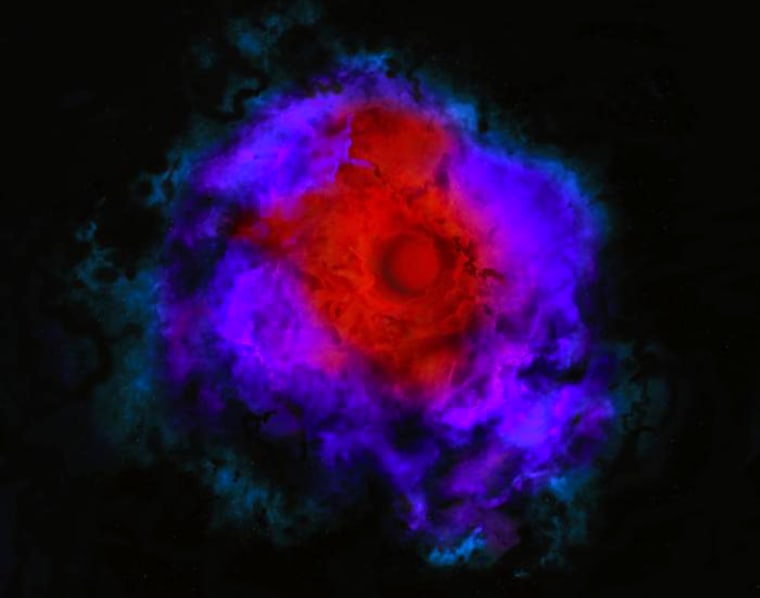The first stars to form in the universe may not have shone like those today, but instead may have been invisible "dark stars" powered by the annihilation of dark matter, a new study finds.
And, researchers say, they would have been gargantuan.
Dark matter, invisible stuff which scientists think makes up the bulk of the universe, has been considered to have role in the evolution of the early universe but not in the formation of the first stars.
According to the conventional theory for how the first stars were born, hydrogen and helium atoms clumped and swirled together in proto-stellar clouds, and as they cooled, the gas clouds shrank and became denser. The cooling and shrinking continued until hydrogen and helium began to fuse, igniting the fusion engine that powers our sun and other stars.
Dark matter’s effect
For the new study, detailed in the January issue of the journal Physical Review Letters, astrophysicists calculated how dark matter would have affected the temperature and density of the gas that clumped together to form the first stars.
The findings suggest that dark matter particles interacted so that they "annihilated" each other, producing subatomic particles called quarks and their antimatter counterparts, antiquarks. This annihilation produced heat that would have kept the proto-stellar cloud of hydrogen and helium from cooling and shrinking and thus preventing fusion reactions from igniting.
"The heating can counteract the cooling, and so the star stops contracting for a while, forming a dark star" 80 million to 100 million years after the Big Bang, said study team member Paolo Gondolo of the University of Utah.
Large and fluffy
These so-called dark stars, named for the song "Dark Star" by the Grateful Dead, would contain mostly normal matter, in the form of hydrogen and helium molecules, but would be vastly larger (about 400 to 200,000 times wider) and "fluffier" than the sun and other stars.
It is conceivable that dark stars exist today, though they would not emit visible light. Instead they would produce gamma rays, neutrinos and antimatter such as positrons and antiprotons, Gondolo said.
"With your bare eyes, you can't see a dark star," Gondolo said, "but the radiation would fry you."
The findings of the study have opened a new phase in the evolution of stars and could aid in the search to find and identify exactly what dark matter is, Gondolo added.
